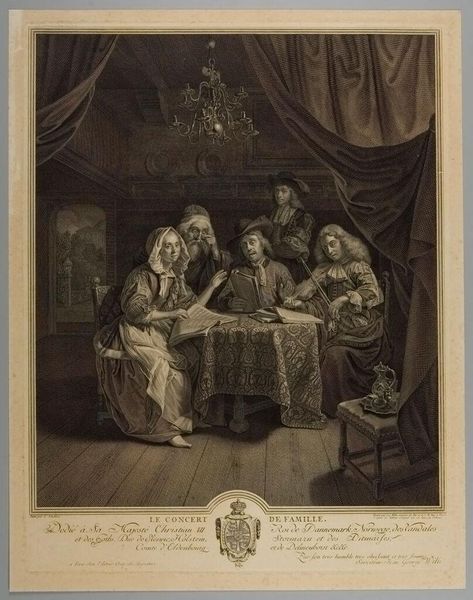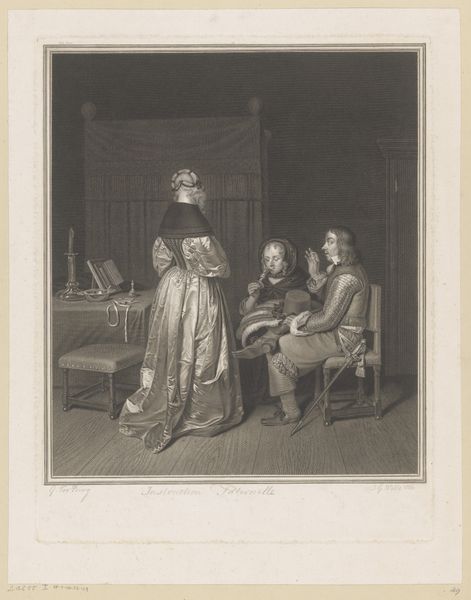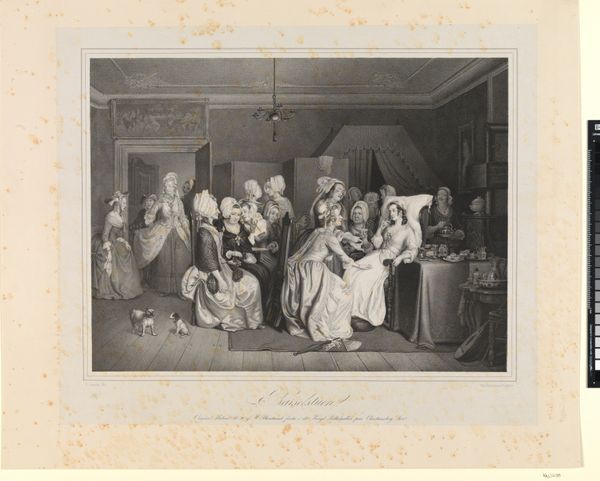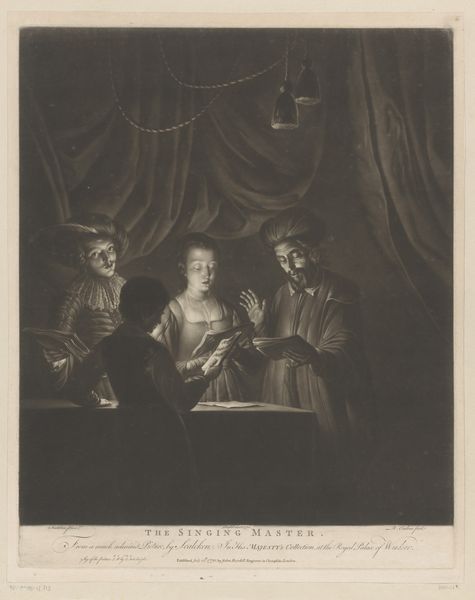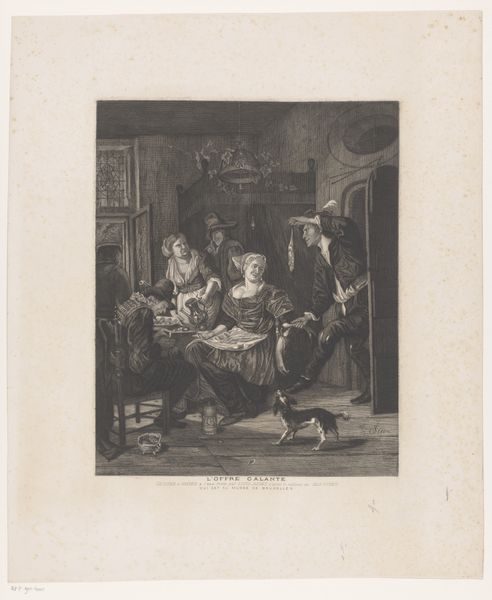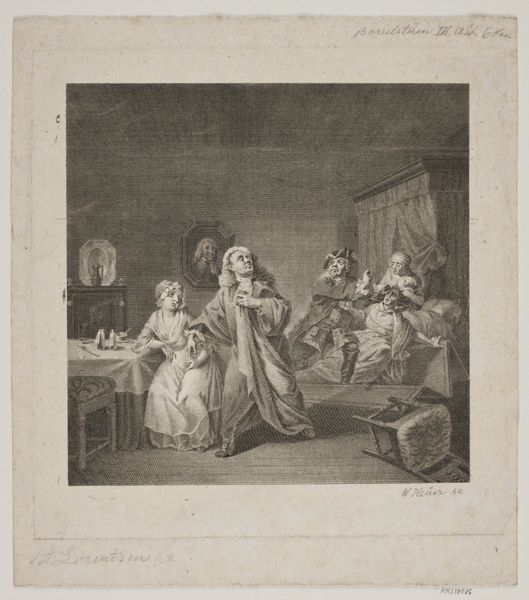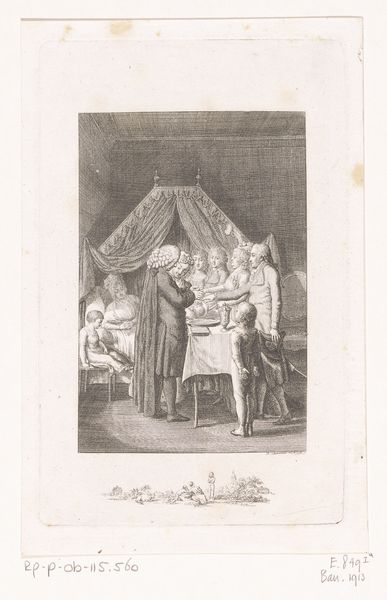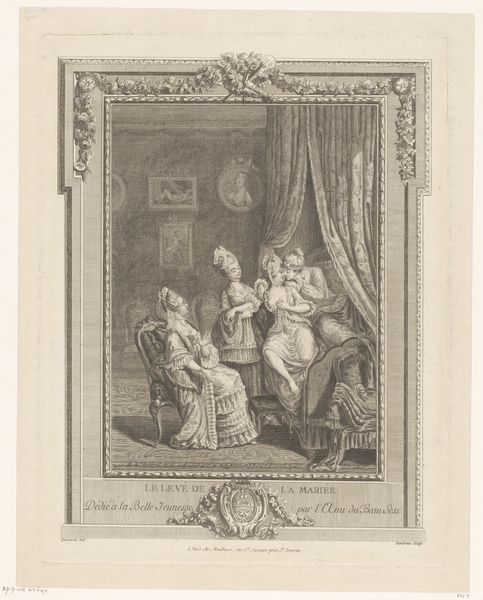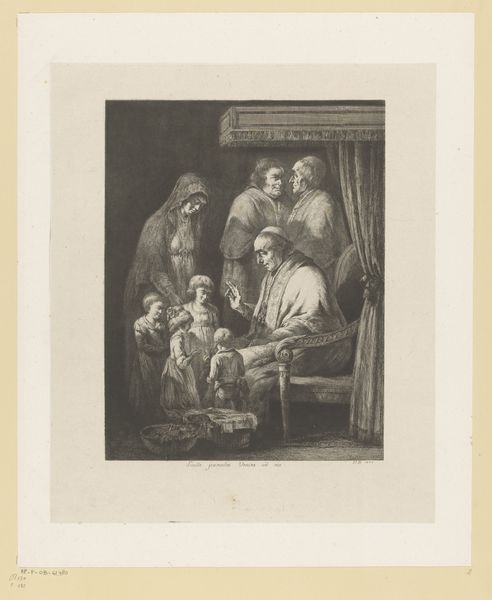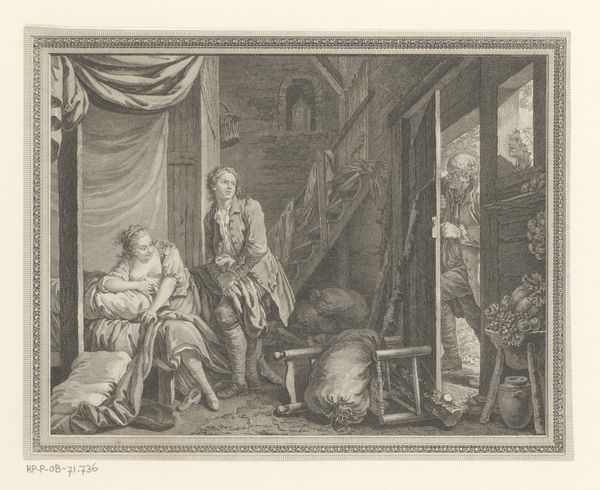
Dimensions: height 486 mm, width 373 mm
Copyright: Rijks Museum: Open Domain
Curator: Ah, here we have Johann Georg Wille's "Musicerend gezelschap rondom een tafel," created between 1767 and 1769. What strikes you first about it? Editor: The light, definitely the light. It's an intimate scene, almost theatrical with the draped curtain, and everyone is clustered around the table—like a little stage. It gives me the sense of a closed-off world, intentionally shielded. Curator: A shielded world indeed, rendered with the exquisite detail characteristic of engraving. Notice the way the candlelight from the chandelier reflects on the faces; light often symbolizes enlightenment or divine presence, especially in scenes of this era. Editor: And within that sheltered space, we see a family performing music. It reads to me as a powerful assertion of privilege, of access to education, leisure, and art-making itself, at a time when so many lacked those opportunities. Curator: Precisely. Music and art have historically signified societal position. The figures themselves convey a symbolic language. Take the older man, for example. He's centered with his thoughtful posture and is likely meant to portray wisdom. Editor: But who had access to such wisdom? Looking closer, the figures, seemingly engrossed in their performance, almost become props themselves. Are we, the viewers, meant to aspire to such a seemingly ideal family? How do we critique these images today given the power structures embedded within the society in which the artwork was created? Curator: Interesting reflection. I agree that the image idealizes, while, simultaneously, revealing and concealing specific cultural dynamics. Wille masterfully conveys layers of narrative through the posture, facial expression, clothing, and other such objects around them. Editor: It reminds me that even seemingly candid depictions can serve to reinforce established hierarchies, and we have to interrogate these seemingly intimate moments for whose stories aren't told. Curator: A crucial observation. Ultimately, this piece provokes reflections about the boundaries between representation and reality in this period. Editor: Agreed. And, the more we dig into historical objects like these, the more complexities we uncover in both past and present society.
Comments
No comments
Be the first to comment and join the conversation on the ultimate creative platform.
